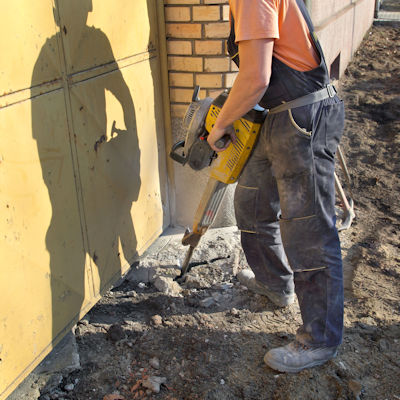Risk Factors Inherent in the Task
In addition to considering the worker attributes that may increase the risk of injury, we must also analyze the risk factors the work task itself brings to the job. We look at the task variables in the workplace that may increase or decrease the risk of cumulative trauma disorders (CTDs) depending on its design and location.

In large measure, work processes are determined by the factors below:
Force: Forcefulness is the amount of physical effort required by the person to do a task and/or maintain control of tools and equipment. Examples of work activities that exert force on the body include: lifting, lowering, pushing, pulling, pinching, pounding, hitting, and jumping.
Vibration: Duration of exposure to vibration plays a large role in the effects of vibration forces. There are two basic types of vibration that can result in MSDs:
- Segmental vibration: When handling vibrating tools, such as a jack-hammer, for a prolonged duration, vascular insufficiency in the hand and fingers can also result in interference with sensory receptor feedback. If a worker can't "feel" the grip properly, he or she may compensate by applying more force than is necessary to hold and handle an object. Segmental vibration has also been linked to carpal tunnel syndrome.
- Whole body vibration: When the whole body is subjected to vibration, most commonly experienced by truck drivers, there is an enhanced risk of injury, especially to the lower back.
Knowledge Check Choose the best answer for the question.
1-3. Which disorder has been linked to segmental vibration?
You forgot to answer the question!
